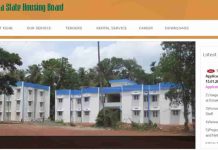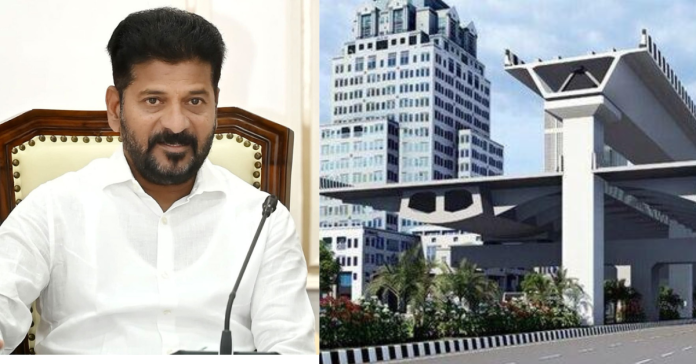Hon’ble Chief Minister Sri A. Revanth Reddy laid the foundation stone for the construction of the 5.320 km Double Decker corridor at a cost of Rs.1,580 crores near Kandlakoya Junction. The new road corridor will end the decades-long hardships faced by motorists on the National Highway (NH)-44. Metro Rail line will also be built on this elevated corridor in the next phase.
Medchal-Malkazigiri, Medak, Kamareddy, Nirmal and Adilabad and twin City dwellers and people traveling on NH 44 are struggling due to increasing vehicular traffic every day. Restrictions in Containment areas created hurdles for road widening in Secunderabad and the Elevated Corridor.
Revanth Reddy focused on the Double decker corridor development and appealed to the union government to transfer the Defence lands to the state government and grant permission for the construction of the elevated corridor. Revanth Reddy, who was also the standing member of the Defence Ministry in the Parliament, always raised the issue of pending corridor projects and addressed the traffic woes.
Soon after assuming the CM office, Revanth Reddy paid special focus to the issue. Chief Minister Revanth Reddy met Defence Minister Rajnath Singh in Delhi on January 5 this year and requested to hand over the Defence land for the expansion of roads in the cantonment area in Hyderabad and also give permission for the construction of an elevated corridor. The Defence wing responded positively and sent a letter to the state government on March 1 agreeing to the construction of elevated corridors. The state government immediately initiated the construction of elevated corridors.
Double Decker Corridor Project Overview
| HIGHLIGHTS | Details |
|---|---|
| Total Corridor Length | 5.320 Km. |
| Length of Elevated Corridor | 4.650 km. |
| Underground Tunnel Length | 0.600 km. |
| Number of Piers | 131 |
| Land Required | 73.16 Acres |
| Defence Land | 55.85 Acres |
| Private Land | 8.41 Acres |
| Land for Underground Tunnel | 8.90 Acres |
| Project Cost | Rs. 1,580 crores |
Details of Elevated Corridor
The Corridor starts from Paradise Junction in Secunderabad on NH-44 and ends at Dairy Farm Road via Tadband Junction and Boinapally Junction. The total length of this corridor is 5.320 km. The elevated corridor will be developed on a 4.650 km stretch. The length of the underground tunnel will be 0.600 km. A total number of 131 Piers (pillars). The elevated corridor will be constructed in six lanes. Ramps will be constructed at two places near Boinapally Junction (at 0.248 km) and (at 0.475 km) to facilitate movement of traffic on the elevated corridor.
After the completion of corridor works, the metro rail line will be taken up on the elevated corridor. The new facility will provide safer, faster and more comfortable journeys for the travelers.
Key Details and Challenges
- Traffic Density and Issues: Paradise Junction witnesses an average of 1,57,105 vehicles per day (passenger car unit per day – PCU), while ORR Junction handles 72,687 vehicles daily. The high density of vehicles on narrow roads leads to frequent traffic jams, stressing commuters and increasing fuel consumption.
- Safety Concerns: The congested roads pose significant safety risks, with frequent road accidents leading to loss of lives. The elevated corridor aims to mitigate these risks by providing segregated lanes for smoother and safer traffic flow.
- Impact on Commuters: Commuters face delays in reaching their destinations due to traffic congestion, impacting productivity and quality of life. The elevated corridor will significantly reduce travel times, easing commuter stress and improving overall travel experience.
Also Read: VCIC Corridor
Benefits of the Elevated Corridor Project in Hyderabad
The Elevated Corridor Project in Hyderabad is poised to bring about substantial benefits to the region, addressing critical transportation challenges and enhancing overall connectivity. Here are the major benefits of the project:
1. Ease Traffic Problems on NH-44
The primary objective of the Elevated Corridor Project is to ease traffic congestion on NH-44, particularly between Secunderabad and Adilabad districts. This corridor will provide a dedicated route for commuters and cargo, alleviating the strain on existing road networks and reducing travel time significantly.
2. Reduce Fuel Consumption
By providing congestion-free travel along the elevated corridor, the project aims to reduce fuel consumption for vehicles. Traffic jams often lead to idling and inefficient fuel usage. With smoother traffic flow, motorists will experience improved fuel efficiency, contributing to cost savings and environmental benefits through reduced emissions.
3. Seamless Connectivity to ORR
The elevated corridor will offer uninterrupted connectivity from the city to Outer Ring Road (ORR). This direct access will enable commuters and freight transporters to bypass city traffic, ensuring faster and more efficient travel between key districts such as Medchal-Malkajgiri, Medak, Kamareddy, Nizamabad, Nirmal, and Adilabad.
4. Accelerate Cargo Transportation
The project will facilitate faster and more efficient cargo transportation between Medchal-Malkajgiri, Medak, Kamareddy, Nizamabad, Nirmal, and Adilabad districts. Improved connectivity and reduced travel times will enhance logistics operations, supporting industries and businesses in the region. This acceleration in cargo movement will bolster economic activities and stimulate growth across various sectors.
Additional Benefits:
- Enhanced Safety: Segregated lanes and reduced traffic congestion will enhance road safety, reducing the risk of accidents and ensuring smoother journeys for commuters.
- Environmental Impact: By promoting efficient traffic flow and reducing vehicle emissions, the project contributes to environmental sustainability, improving air quality and reducing carbon footprint.
- Economic Growth: Improved connectivity and logistics efficiency attract investments, stimulate economic growth, and create employment opportunities in the region.
Also Read: CBIC corridor
Major Benefits
The development plan for Genome Valley and surrounding areas, facilitated by the construction of elevated corridors, is set to enhance both intra-state and inter-state connectivity. This initiative will notably benefit districts like Karimnagar and Mancherial within Telangana, as well as cities such as Nagpur in Maharashtra. Beyond transportation improvements, the project aims to catalyze comprehensive development across residential, educational, commercial, recreational, and hospitality sectors. Notably, the designation of a 25-kilometer radius as a “Pollution Free Zone” positions Genome Valley as an ideal location for a healthy and high-quality lifestyle.
In March, the Ministry of Defence granted approval for the construction of elevated corridors over defence territory in Hyderabad, marking a significant milestone in transportation infrastructure development. This approval followed eight years of negotiations and requests, underscoring its importance for enhancing connectivity in Genome Valley’s suburbs: Turakapally, Shamirpet, Medchal, Uppal, Patancheru, Jeedimetla, Gachibowli, and Keesara. These corridors are expected to facilitate faster travel along critical routes like the Hyderabad-Nagpur National Highway and the Hyderabad-Karimnagar Rajiv Highway.
The approved project comprises two major corridors strategically designed to alleviate congestion and improve traffic flow. Corridor 1 spans 18.30 kilometers from Paradise Junction near Kandlakoya to the Outer Ring Road (ORR) on Nagpur Highway (NH-44). This segment includes a 12.68 km stretch of six-lane elevated corridor with multiple exits and entries at crucial junctions. Future-proofing plans include provisions for a double-decker corridor to accommodate metro extensions. Meanwhile, Corridor 2 will span 11.30 kilometers as a six-lane elevated stretch, further enhancing transportation efficiency in the region.
Frequently Asked Questions:
A: The Hyderabad Double Decker Corridor is a major infrastructure initiative aimed at easing traffic congestion and enhancing connectivity on NH-44 in Hyderabad.
A: It will reduce travel time, improve traffic flow, and facilitate smoother connectivity between key districts and highways.
A: It spans from Paradise Junction near Kandlakoya to the Outer Ring Road (ORR) on Nagpur Highway (NH-44), covering critical routes in the city.
A: The Ministry of Defence approved the project, marking a significant milestone in Hyderabad’s infrastructure development.
Suggested Articles:
Visakhapatnam Chennai Industrial Corridor (VCIC): Impact of real estate, growth and…
Chennai Bengaluru Industrial Corridor Project: Complete Guide 2024
Future of Real Estate in Hyderabad: Growth, Developments & Investment Areas































